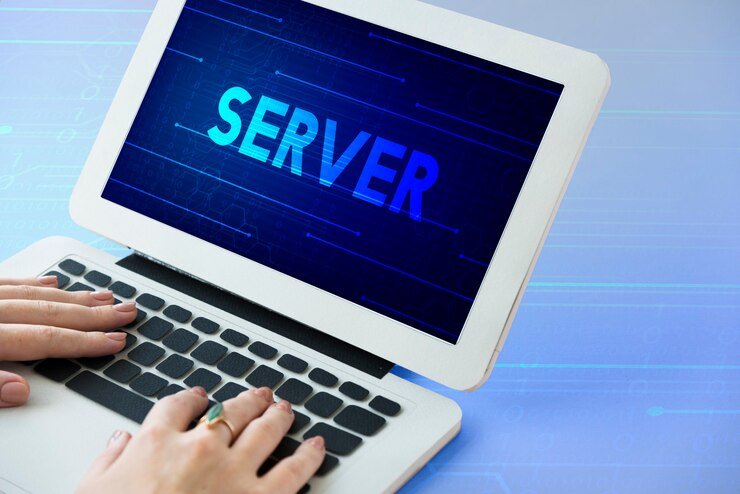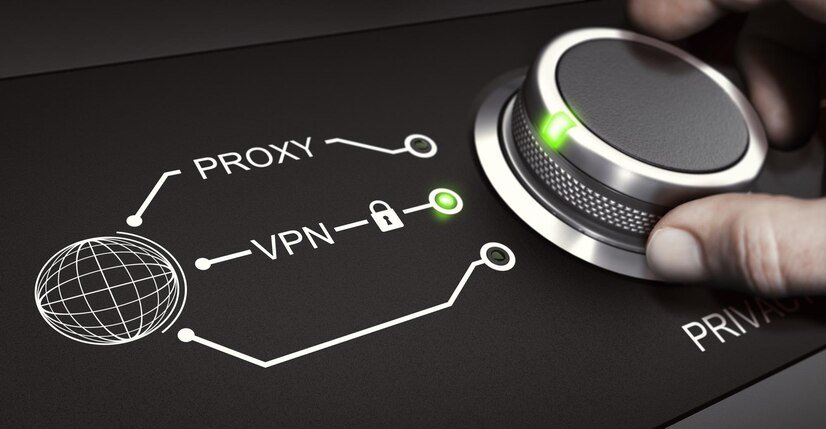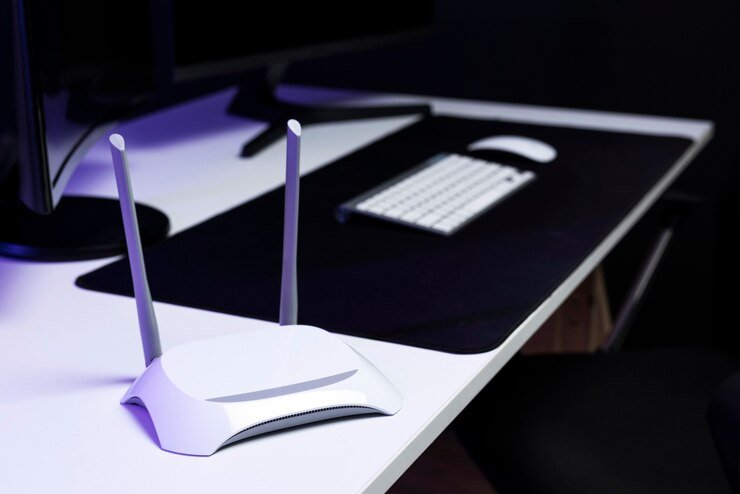
Introduction to MAC Addresses and its Importance in Networks
In the vast world of networking, MAC addresses play a critical role. They are unique identifiers assigned to network interfaces for communication on a local area network (LAN). Understanding what is a MAC address is can be the key to troubleshooting various connectivity issues that might arise.
Imagine you’re trying to connect your device to Wi-Fi, but it just won’t cooperate. You reset your router and check your internet connection, yet nothing seems to work. This could very well relate back to those seemingly innocent MAC addresses.
Whether you’re an IT professional or simply someone who uses devices daily, knowing how these addresses function can save you time and frustration when things go awry in your network environment. In this blog post, we’ll explore common problems associated with MAC addresses and provide practical steps for resolving them effectively. Let’s dive into the intricate world of networking!
Common Network Problems Caused by MAC Address Issues
MAC address issues can lead to a variety of frustrating network problems. One common problem is device connectivity failure. When devices fail to recognize each other due to incorrect MAC addresses, users may find themselves unable to connect.
Another issue arises with IP conflicts. If two devices have the same MAC address on the network, it leads to confusion for routers and switches, causing packet loss or dropped connections.
Network performance can also suffer. Anomalies in MAC addressing might result in slow data transmission speeds or intermittent connectivity drops, leaving users frustrated as they try to stream videos or browse online.
Security vulnerabilities are another concern. Incorrectly configured MAC filtering settings may either block legitimate devices or allow unauthorized access, putting sensitive information at risk.
Addressing these issues promptly is essential for maintaining a reliable and secure network environment.
Identifying the Source of the Problem: Is it the Device or the Network?
When faced with MAC address-related issues, determining the source of the problem can feel daunting. Is it a device malfunction or a network hiccup? Understanding where to start is crucial.
Begin by isolating the issue. Check if multiple devices are experiencing the same connectivity problems. If only one device is affected, chances are it’s related to that specific hardware.
Next, review your network settings. A misconfiguration at the router or switch level could be disrupting communication. Sometimes, resetting these devices can help restore normal functionality.
Also consider firmware updates on your devices and routers. Outdated software may lead to unexpected behavior tied to MAC addresses.
Testing different cables and ports isn’t just practical; it’s often revealing too. Each step brings you closer to pinpointing whether you’re dealing with a rogue device or an errant network configuration causing headaches.
Troubleshooting Steps for Device-related MAC Address Issues
When facing device-related MAC address issues, the first step is to reboot your device. This simple action can clear temporary glitches affecting connectivity.
Next, check your network settings. Navigate to the network configuration section and ensure that the MAC address is correctly listed. If it shows as “0” or an invalid value, you may need to reset it.
Updating your device’s drivers can also resolve many problems. Outdated or corrupted drivers might cause conflicts with MAC addresses.
Additionally, inspect any security software on your device. Firewalls and antivirus programs sometimes block legitimate connections based on incorrect assumptions about a MAC address’s legitimacy.
If these steps don’t work, consider factory resetting your device as a last resort. Be cautious; this will erase all data stored on it.
Troubleshooting Steps for Network-related MAC Address Issues
When facing network-related MAC address issues, start by rebooting your router. This simple step can refresh the settings and resolve temporary glitches.
Next, check for firmware updates on your networking equipment. Manufacturers often release updates that fix bugs or enhance functionality. Keeping firmware current is essential.
If problems persist, examine DHCP settings within the router’s interface. Ensure MAC address filtering isn’t inadvertently blocking devices from accessing the network.
Consider running a packet capture tool to monitor traffic and identify any anomalies linked to specific what is a MAC address. This analysis can provide deeper insights into connection issues.
Try connecting another device to the same network segment. If it functions correctly, this indicates that the original device may be at fault rather than the entire network setup.
Common Network Issues Caused by Incorrect MAC Addresses
Incorrect MAC addresses can lead to a variety of frustrating network issues. One common problem is device connectivity failures. If a device’s MAC address doesn’t match the network, it may not be able to communicate effectively.
Another issue arises with IP address conflicts. When two devices share the same MAC address, they can confuse the router and disrupt internet access for both units. This often results in intermittent connections or complete loss of service.
Security vulnerabilities also emerge from incorrect configurations. A spoofed MAC address might allow unauthorized devices onto your network, leading to potential breaches and data leaks.
Slow performance can stem from routing problems caused by mismatched MAC addresses. Devices struggling to find their way on the network can significantly affect overall speed and efficiency, leaving users frustrated with lagging connections.
How to Identify MAC Address Related Problems
Identifying MAC address-related problems begins with observing device behavior. If a device frequently disconnects from the network or fails to connect at all, it’s time to investigate the MAC address.
Check your router’s DHCP client list. This will show you which devices are connected and their corresponding MAC addresses. If a device isn’t listed, there could be an issue.
Sometimes, duplicate MAC addresses can cause conflicts. Use tools like `arp -a` in command prompt on Windows or terminal commands on Mac/Linux to inspect active connections and spot duplicates.
Another method is pinging the problematic device’s IP address. If there’s no response, consider whether it’s related to its MAC address settings.
Examine network logs if available; they can provide insights into any anomalies linked to specific MAC addresses. Understanding these signals makes pinpointing issues much easier.
Steps for Troubleshooting MAC Address Issues
When troubleshooting MAC address issues, start by checking the device’s settings. Navigate to the network configuration and locate the MAC address. Ensure it matches what’s documented on your network.
Next, restart both the device and router. This simple step can often clear minor glitches disrupting connectivity.
If problems persist, consider resetting your network interface card (NIC). Disable and then enable the NIC through system settings to refresh its connection.
Review any recent changes made to your network setup. Adding or removing devices may cause conflicts with existing MAC addresses.
For further investigation, use command-line tools like “arp -a” in Windows or “ifconfig” in Linux/MacOS. These commands display connected devices along with their associated MAC addresses.
Check for firmware updates on your router or switch. Outdated software can lead to compatibility issues that affect MAC address recognition within a local area network (LAN).
Solutions for Fixing MAC Address Problems
When tackling MAC address problems, the first step is to ensure your device’s settings are correct. Navigate to your network settings and verify that the MAC address is appropriately configured.
If issues persist, consider resetting the network adapter. This can often resolve temporary glitches affecting connectivity. Simply disable and then re-enable the adapter in your device’s control panel or system preferences.
For devices with static IP assignments linked to a specific MAC address, double-check those configurations. Incorrect entries may lead to connection failures.
In some cases, updating your network drivers can significantly improve performance and fix underlying issues related to outdated software. Always make sure you have the latest version compatible with your operating system.
If you’re using a router or switch, check its configuration as well. Sometimes a simple reboot of these devices can clear up any hiccups associated with MAC addresses.
Preventing Future MAC Address Issues
Preventing future MAC address issues starts with proper network management. Regularly updating your devices ensures they run the latest firmware, which can help resolve known bugs.
Consider implementing a consistent naming convention for your hardware. This makes it easier to track and identify devices within the network. A well-organized inventory reduces confusion.
Additionally, monitor your network regularly using diagnostic tools. These can alert you to potential problems before they escalate into major issues.
Educating your team about MAC addresses is also beneficial. Many users may not understand how these addresses function or why they matter in networking.
Maintain clear documentation of changes made to the network configuration. This practice helps trace back any recent modifications if a problem arises later on, simplifying troubleshooting efforts significantly.
Conclusion
When it comes to network issues, understanding MAC addresses is essential. They serve as unique identifiers for devices on a network and play a crucial role in communication. Problems with MAC addresses can lead to connectivity issues, data transfer delays, or even total disconnection from the network.
By identifying whether the issue lies within the device itself or the broader network environment, you can take effective steps toward resolution. Whether troubleshooting device-related problems by checking configurations and resetting network settings or addressing broader network challenges like conflicts and misconfigurations, being methodical will help you pinpoint the root cause.
It’s also important to recognize common symptoms of incorrect MAC address usage. Issues may arise due to duplicate addresses on a single local area network (LAN) or misconfigured static IP assignments tied to incorrect hardware identifiers.
Proactively monitoring your devices’ MAC addresses and their configurations can prevent many headaches down the line. Regular checks ensure that everything runs smoothly and helps identify potential problems before they escalate into major disruptions.
Arming yourself with knowledge about what a MAC address is—and how it functions—empowers you to tackle any related networking challenges effectively. With these insights at hand, you’ll be better prepared to navigate through any hiccups that might occur in your digital landscape.
RELATED POSTS
View all


